As a certified B Corporation, UncommonGoods is excited about sustainability. That means more to us than just being “green”—we strive to offer products that reflect the environmental and social best interests of everyone. So, when our makers are as concerned with sustainability as we are, we’re always eager to learn more about their process and the positive impact they’re having on the world.
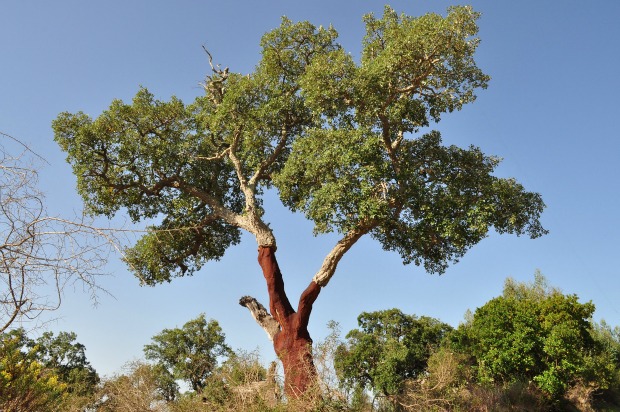
A cork oak (Quercus suber)
When you think of cork, you probably think of wine stoppers and bulletin boards. But this amazing, natural material can be used for much more—from watches to umbrellas. Cork has been used for bottle stoppers for thousands of years, dating back to Ancient Egypt. Frank Lloyd Wright gave cork his seal of approval by using it in the bathrooms of his famous Fallingwater. On the more personal (and affordable) side, artelusa (USA) cork company produces a growing line of cork designs crafted by Portuguese artisans from local cork. We spoke with Josh Drucker of artelusa about this fascinating, flexible material, the methods used to work with it, and the sustainable story behind it all.
How do issues of sustainability manifest in your company’s products?
Product sustainability plays a major role in our company’s vision and philosophy. Our entire collection features natural cork fashion products. Cork is the outer bark of the cork tree, a type of oak, which grows primarily in southern Portugal, Spain, and Morocco. The bark of the cork tree is peeled off to prolong the life of the tree. The bark regenerates itself every 7-9 years. We also use other natural resources in our products, such as cotton for the inner lining and vegetable dye for coloring.
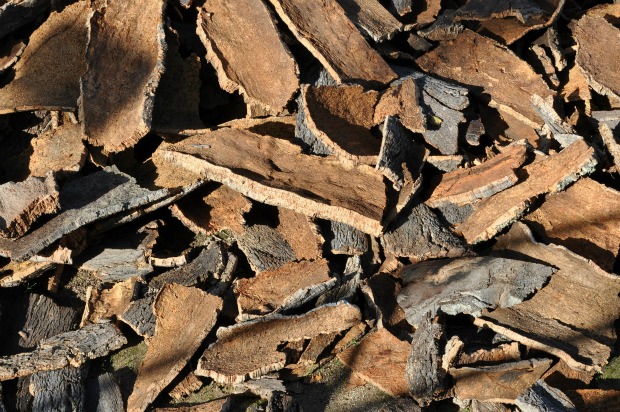
Fragments of harvested cork
How do traditional techniques and materials coexist with more modern production methods in your designs?
The processes of harvesting and dyeing cork has been passed down from generation to generation and is still being used to this day. The first harvest of a cork tree happens after approximately 20 years from planting, and with a minimum trunk diameter of 70cm. Each harvest produces different cork qualities. The first harvest is not of a good quality, and the cork is used mainly for flooring. Cork stoppers are not manufactured before the third harvest. Champagne stoppers are of the best quality, as they’re for expensive wine.
The specific dyeing process is one’s family secret, and is not shared with the public. The sheet of cork goes through a dyeing machine that injects vegetable pigments that covers the cork. The layer is very thin, in order to maintain the natural appearance of the cork. After a drying process, the dyed cork is glued to a backing textile (cotton). The glue used is an EVA (water based) glue.
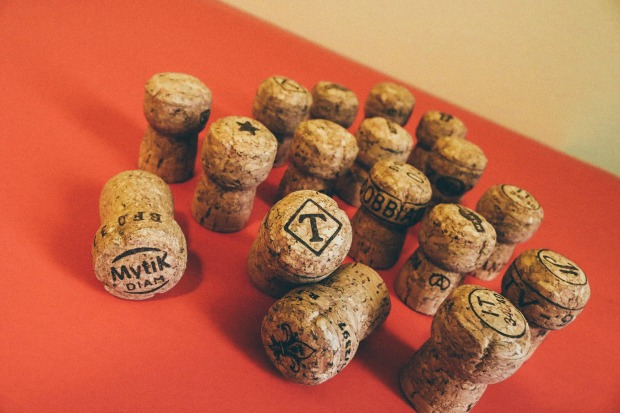
Can you tell us more about the artisans and their techniques?
Our products are handcrafted in Portugal by locals whose families have been involved in the cork industry for generations. The harvesting of the bark has not changed for generations. Based on each size of tree and its bark, they decide the highest point of the bark to harvest. Using an ax, they make a cut at the highest point around the bark, then cutting a straight cut to the ground. They have to be very careful not to hit the bark too hard, as not to create a “wound” that may attract insects, to a point it may kill the tree.
At one time, when the wine industry started using plastic “corks,” there was a widely held belief that natural cork was “endangered” and on its way out. Apparently, that was never the case, but is there more to this story?
During the ‘90s, wineries of inexpensive wines turned to plastic stoppers as a cost-cutting measure. This led to decreased demand for natural cork. As a result, less bark was peeled off of the cork trees, which reduced the lifespans of the trees. The reduced demand for cork as wine stoppers opened the door for cork to be used in various outlets of the fashion industry. Now, southern Portugal has approximately 180 million acres of cork forests. The cork tree is a protected tree in Portugal, and the harvest season is from May to September of each year.
How does cork perform in place of more traditional materials used for clothing and accessories? What are its unique qualities as a material? In other words, why cork for a tie, handbag, or umbrella?
Cork has many advantages over traditional materials used in the fashion industry. Cork is extremely lightweight, water repellent, and very durable. Cork’s durability is proven by its use as kitchen flooring. The cork used for handbags goes through a quality selection process based on color, thickness, hole concentration, etc. It is processed just to produce a cylinder. This cylinder is sliced in a thickness of 0.08 mm creating a cork sheet, that later is put into boiling water to kill any insects that might be on it. Then it is put in ice water, and goes through a drying process of approximately six months.
Natural Cork Oval Crossbody Bag
Not only is cork a sustainable material, but its ongoing harvest actually improves the longevity of the trees that produce it. Does that make it super-sustainable? We hope so, because we look forward to the new applications of cork that artelusa and other designers roll out for years to come, continuing to breathe new life into a rich, renewable tradition.

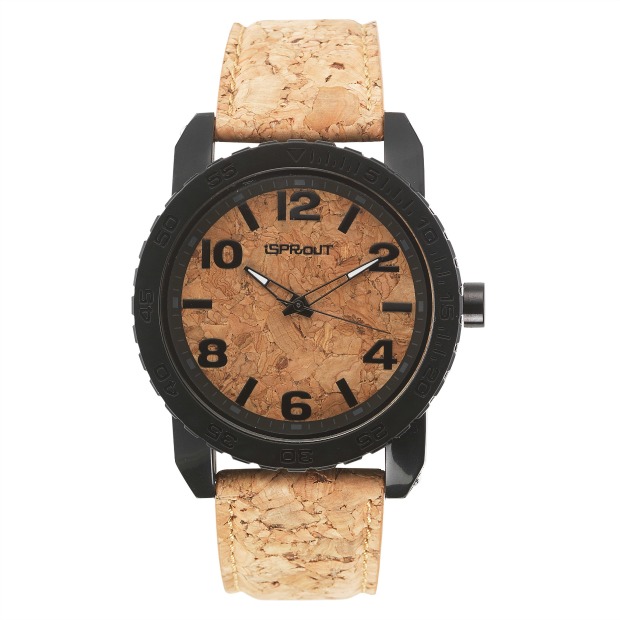
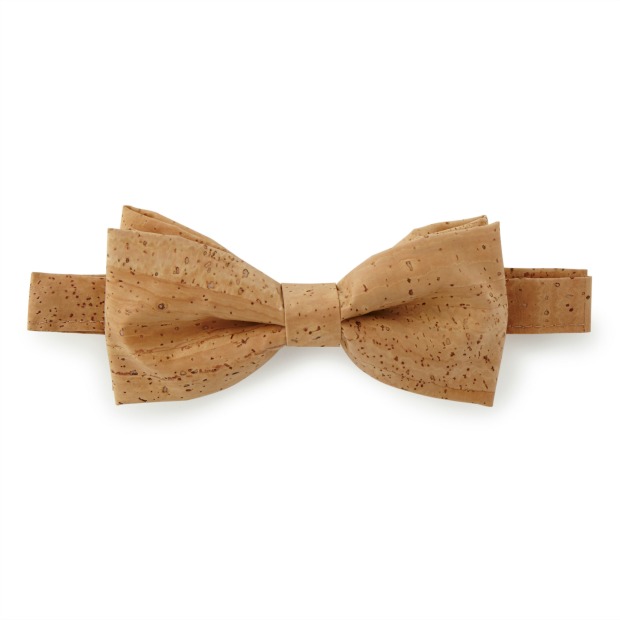
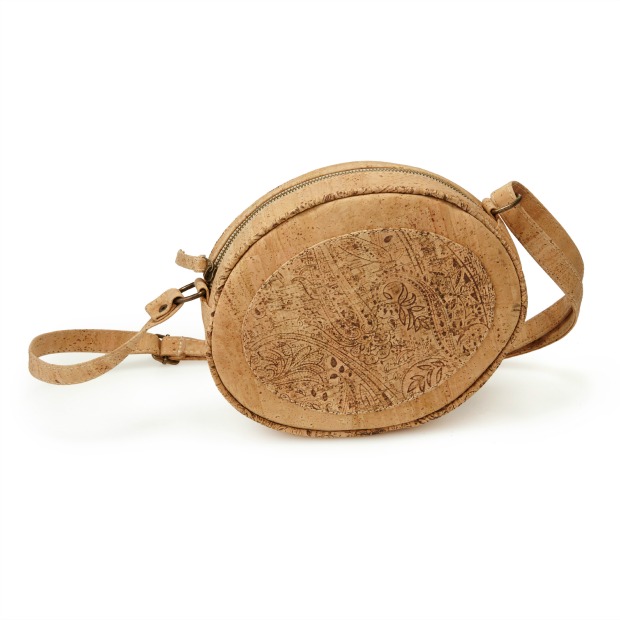

1 Comment
They say cork is durable, but is it really? I’ve used cork boards for various purposes before and they didn’t seem very durable to me.
That being said, this cork stuff looks awesome, even if it does turn out it’s not all that durable 😉